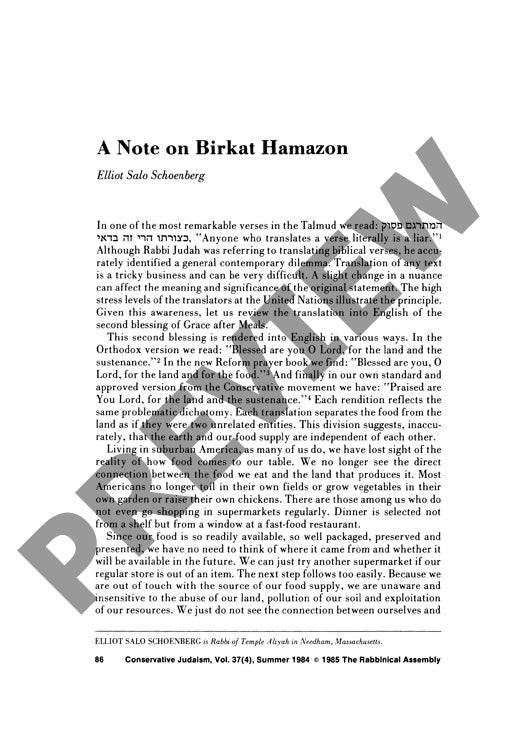A Note on Birkat Hamazon
Couldn't load pickup availability
Modern prayer book translations artificially divide "the land and the food" in Judaism's Grace after Meals blessing, obscuring an ancient understanding of ecological interconnection. Analysis of Orthodox, Reform, and Conservative liturgical texts reveals this problematic separation in the second blessing of Birkat Hamazon, while examination of Talmudic sources—particularly Berakhot 49a—suggests a more unified original meaning. Through linguistic analysis of the Hebrew text and application of the literary device hendiadys, this research demonstrates that the blessing should be rendered as "the land that produces the food," reflecting the rabbinical recognition of soil and sustenance as inseparable elements. This interpretation gains fresh relevance when viewed alongside Rachel Carson's environmental writings, highlighting how current translations both reflect and perpetuate modern society's disconnection from agricultural origins. The proposed translation not only maintains fidelity to ancient rabbinic understanding but also restores a crucial liturgical acknowledgment of humanity's dependence on responsible environmental stewardship.

More Information
-
Physical Description
-
Publication Information
Published 1984
ISBN
-
Publication Credits
Elliot Schoenberg

